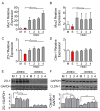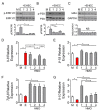Variations in the Composition of Human Milk Oligosaccharides Correlates with Effects on Both the Intestinal Epithelial Barrier and Host Inflammation: A Pilot Study
- PMID: 35267989
- PMCID: PMC8912797
- DOI: 10.3390/nu14051014
Variations in the Composition of Human Milk Oligosaccharides Correlates with Effects on Both the Intestinal Epithelial Barrier and Host Inflammation: A Pilot Study
Abstract
Background: Human milk oligosaccharides are complex, non-digestible carbohydrates that directly interact with intestinal epithelial cells to alter barrier function and host inflammation. Oligosaccharide composition varies widely between individual mothers, but it is unclear if this inter-individual variation has any impact on intestinal epithelial barrier function and gut inflammation.
Methods: Human milk oligosaccharides were extracted from the mature human milk of four individual donors. Using an in vitro model of intestinal injury, the effects of the oligosaccharides on the intestinal epithelial barrier and select innate and adaptive immune functions were assessed.
Results: Individual oligosaccharide compositions shared comparable effects on increasing transepithelial electrical resistance and reducing the macromolecular permeability of polarized (Caco-2Bbe1) monolayers but exerted distinct effects on the localization of the intercellular tight junction protein zona occludins-1 in response to injury induced by a human enteric bacterial pathogen Escherichia coli, serotype O157:H7. Immunoblots showed the differential effects of oligosaccharide compositions in reducing host chemokine interleukin 8 expression and inhibiting of p38 MAP kinase activation.
Conclusions: These results provide evidence of both shared and distinct effects on the host intestinal epithelial function that are attributable to inter-individual differences in the composition of human milk oligosaccharides.
Keywords: human milk oligosaccharides; inflammation; intestinal epithelial barrier.
Conflict of interest statement
P.M.S. has received honoraria from Abbott Nutrition, Mead Johnson Nutritional and Nestlé-Gerber.
Figures




Similar articles
-
Blends of Human Milk Oligosaccharides Confer Intestinal Epithelial Barrier Protection in Vitro.Nutrients. 2020 Oct 5;12(10):3047. doi: 10.3390/nu12103047. Nutrients. 2020. PMID: 33027993 Free PMC article.
-
Characterizing microbiota-independent effects of oligosaccharides on intestinal epithelial cells: insight into the role of structure and size : Structure-activity relationships of non-digestible oligosaccharides.Eur J Nutr. 2017 Aug;56(5):1919-1930. doi: 10.1007/s00394-016-1234-9. Epub 2016 Jun 13. Eur J Nutr. 2017. PMID: 27295033 Free PMC article.
-
Human Milk Oligosaccharides Mediate the Crosstalk Between Intestinal Epithelial Caco-2 Cells and Lactobacillus PlantarumWCFS1in an In Vitro Model with Intestinal Peristaltic Shear Force.J Nutr. 2020 Aug 1;150(8):2077-2088. doi: 10.1093/jn/nxaa162. J Nutr. 2020. PMID: 32542361 Free PMC article.
-
Human Milk Oligosaccharides: Their Effects on the Host and Their Potential as Therapeutic Agents.Front Immunol. 2021 May 24;12:680911. doi: 10.3389/fimmu.2021.680911. eCollection 2021. Front Immunol. 2021. PMID: 34108974 Free PMC article. Review.
-
Development, validation and implementation of an in vitro model for the study of metabolic and immune function in normal and inflamed human colonic epithelium.Dan Med J. 2015 Jan;62(1):B4973. Dan Med J. 2015. PMID: 25557335 Review.
Cited by
-
Human Milk Oligosaccharides Are Present in Amniotic Fluid and Show Specific Patterns Dependent on Gestational Age.Nutrients. 2022 May 14;14(10):2065. doi: 10.3390/nu14102065. Nutrients. 2022. PMID: 35631205 Free PMC article.
-
Human milk oligosaccharide 2'-fucosyllactose protects against high-fat diet-induced obesity by changing intestinal mucus production, composition and degradation linked to changes in gut microbiota and faecal proteome profiles in mice.Gut. 2024 Sep 9;73(10):1632-1649. doi: 10.1136/gutjnl-2023-330301. Gut. 2024. PMID: 38740509 Free PMC article.
-
Mining and Characterization of Thermophilic Glucose Isomerase Based on Virtual Probe Technology.Appl Biochem Biotechnol. 2023 Jul;195(7):4399-4413. doi: 10.1007/s12010-023-04349-5. Epub 2023 Jan 25. Appl Biochem Biotechnol. 2023. PMID: 36696038
-
Human milk oligosaccharides: bridging the gap in intestinal microbiota between mothers and infants.Front Cell Infect Microbiol. 2025 Jan 6;14:1386421. doi: 10.3389/fcimb.2024.1386421. eCollection 2024. Front Cell Infect Microbiol. 2025. PMID: 39835278 Free PMC article. Review.
-
Using Organoids to Tap Mammary Gland Diversity for Novel Insight.J Mammary Gland Biol Neoplasia. 2024 Mar 28;29(1):7. doi: 10.1007/s10911-024-09559-z. J Mammary Gland Biol Neoplasia. 2024. PMID: 38539019 Free PMC article. Review.
References
MeSH terms
Substances
Grants and funding
LinkOut - more resources
Full Text Sources

